Australia So Much to See
Coober Pedy - A movie location, and Kanku-Breakaways
Many movies, television series and documentaries have been filmed in part in and around Coober Pedy. Parts of Mad Max Beyond
Thunderdome were filmed at The Breakaways, and Crocodile Harry’s underground lair in Coober Pedy also was visited in this movie. A number of science fiction films have used the desert landscapes around Coober Pedy. Some of the many include:
1984 The Fire in the Stone
1984 Where the Green Ants Dream
1985 Burke & Wills
1985 Mad Max Beyond Thunderdome
1987 Ground Zero
1989 The Salute of the Jugger
1991 Until the End of the World
1993 Stark (miniseries commenced)
1994 The Adventures of Priscilla, Queen
of the Desert
1999 Siam Sunset
2000 Pitch Black
2000 Red Planet
2001 The Amazing Race (series commenced)
2003 Kangaroo Jack
2006 Opal
Dream
2016 Alien Arrival
2016 The Osiris Child
2018 Outback Opal Hunters (series commenced)
2021 Mortal Kombat (commenced and yet to be released)
See more about some of these movies on the Coober Pedy drive-in cinema website
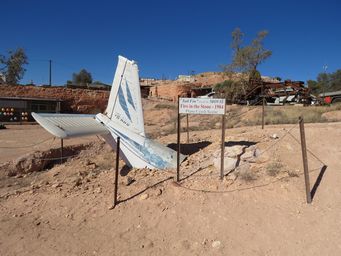
Tail fin used for the plane crash scene in the 1984 movie "Fire in the Stone", on display at The Old Timers Mine, Coober Pedy.
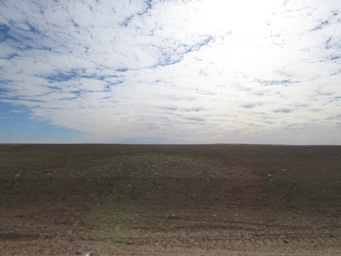
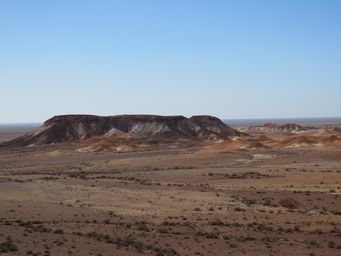
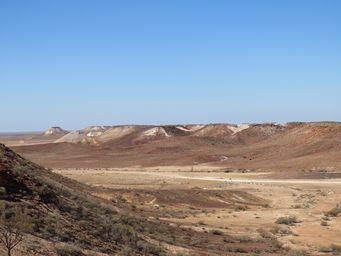
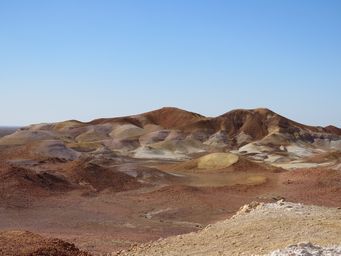
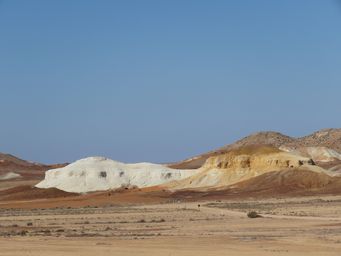
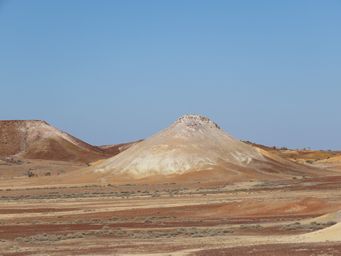
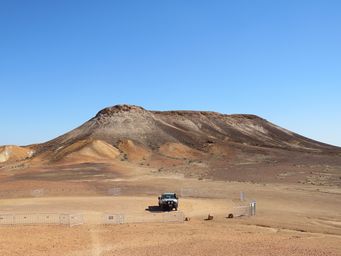
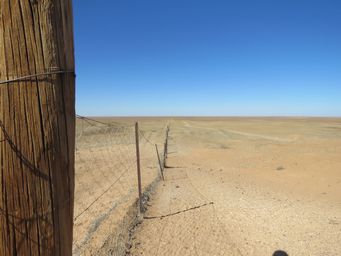
Kanku-Breakaways Conservation Park covers almost 15,000 hectares, featuring majestic and colourful arid scenery.
The area is
home to almost sixty native flora species including acacias, mallee and eremophilia. It is also home to a variety of wildlife, including
red kangaroos, euro, echidna, numerous bird species and the fat-tailed dunnart (a mouse-like marsupial). The Kanku-Breakaways Conservation
Park is co-managed by the Antakirinja Matu-Yankuntjartjara Aboriginal Corporation (AMYAC), the traditional owners of the area. The
entire park is a registered Aboriginal Site under the Aboriginal Heritage Act 1988. You can read the stories about this area and learn
about its spiritual significance at the main lookout information shelter.
Since 2013, the Kanku-Breakaways Conservation Park
has been managed by the Kanku-Breakaways Co-management Board, a unique co-management arrangement between the AMYAC, District Council
of Coober Pedy and Government of South Australia.
A permit is required to visit the Kanku-Breakaways Conservation Park. This can be purchased at the Coober Pedy Visitor Centre and Underground Books. The cost is $10 per car ($8 for those with
an eligible concession card).
The turn-off to the Kanku-Breakaways is signed from the Stuart Highway 25 kilometres north of Coober
Pedy, and the drive though the formations then joins the Oodnadatta Road (Kempe Road) a few kilometres east of Coober Pedy. The drive, which has parking areas at key viewing places, can be taken in either direction. Please do not drive off the formed
track.
This multi-coloured formation (at left) is Kalaya, the Emu, with his chicks which are the white mounds at his feet.
The contrasting white and orange peaks are often called Pepper and Salt (below left), however their name is really Papa Kutjara (Two
Dogs), in conjunction with the white hill opposite, which is sometimes called The Castle (below right). This hill is Wati (the
man), looking at his two dogs; one white and one brown. The contrasting colours have been caused by different rates of erosion
exposing the different colours of the rocks.
New parking areas were being constructed, with fencing to prevent damage by vehicle driving off the tracks. From here a walk
trail went to the top of the breakaway hill.
As we left the main part of the breakaway range, the track travelled along the Dog Fence, part of the vermin proof fence.
At 5,614 kilometres, this is the longest fence in the world, running from the south coast near the Head of Bight in South Australia, it continues all the way to Jimbour in Queensland.
When the failed rabbit proof fences of the 1880s had fallen into disrepair, the needs of graziers to protect their livestock from dingoes initiated the 1912 – 1914 reconstruction of the fences to form a continuous dog proof fence.
Once totalling 8,614 kilometres, today the fence is 5,614 kilometres long, and it is kept well maintained. Commencing in south
western South Australia on the edge of the Great Australia Bight due south of Nullarbor Roadhouse, the fence continues north in Queensland
before turning southward again to terminate at Jimbour in the Darling Downs region.
References and resources
Parks SA Kanku-Breakaways Conservation Reserve
This park will make you feel like you're on
Mars
Similarly, the desert lands around Silverton near Broken Hill in New South Wales have been used in some of these and many other films.